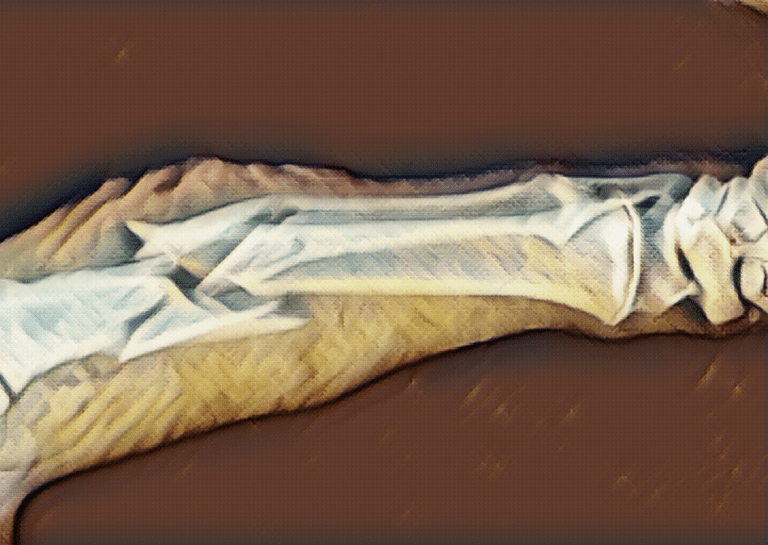Bone breakages or fractures occur when a bone is placed under more pressure than it can withstand. A fracture can be sustained as a result of sudden impact (from a fall or hit), or due to repetitive stress over a period of time (from repeated activity such as sport or physical labor).
Broken bones are increasingly common in pediatric emergency departments in the US, making up a large portion of the 1.2 million musculoskeletal injuries reported each year. Fractures are rarely life-threatening, but if left untreated, a broken bone may heal improperly or else not heal at all. Over time, improperly healed bones can cause musculoskeletal misalignment or deformity.
Bone fractures in children are often different from those of adolescents and adults because the chemical composition of bones differs depending on age. Infants and children have soft, flexible bones that bend more easily, while adults’ bones are hard, brittle, and more likely to break into separate pieces.
Table of contents
Types of bone fractures
Complete fracture
More common in adults than children, complete fractures are when the bone breaks into 2 or more separate pieces.
Partial fracture
Also called an ‘incomplete’ fracture, this is when the breakage does not extend through the bone’s outer layer called the cortex.
Greenstick fracture
This is a type of partial or incomplete fracture that is most common in infants and children. A greenstick fracture occurs in young, soft bones when they bend under pressure and break only on the outside, rather than breaking into pieces.
Insufficiency fracture
Occurs when a bone breaks more easily than it should due to insufficient strength. This can happen as a result of a condition that weakens the bones, such as osteoporosis, or because of dietary deficiencies.
Stress fracture
A stress fracture is an overuse injury that can happen when a bone has to support a heavy load while performing a repetitive action, such as walking or running.
Growth plate (physeal) fracture
The growth plate refers to the area of cartilage and new growth present at the end of children’s bones. Fracture of this cartilage can impact growth and cause a decreased range of motion and deformity if left untreated.
Bone fractures in infants and children
Bone fractures differ dramatically between children and adults. The unique composition of young bones means that they are less likely to break and can heal much faster than adults’ bones.
The bone’s outer layer made of vascular tissue (the periosteum) is more active in children and can better promote healing and union in bone fractures. Children have a thicker and stronger periosteum which reduces the likelihood of open fractures and the displacement of a fractured bone.
How to recognize a bone fracture
Bone fractures can vary in severity and may not be readily apparent. Symptoms of a bone fracture include:
- Localized pain that worsens with movement
- Swelling
- Red, inflamed skin
- Bruising
- Tenderness around the affected area
- Visible deformity
When to see a doctor
Bone fractures in children typically occur during playtime or through playing sports. If your child has fallen or taken a hit and later displays the above symptoms, you should suspect a bone fracture and have them seen by a doctor.
Depending on the location and the severity of the fracture, a child may be inconsolable with pain or unable to move the affected limb, be it an arm, leg, or finger. If this is the case, ensure they receive immediate medical treatment.
Diagnosis and treatment
Early diagnosis is important for ensuring proper healing and reducing the risk of misalignment and deformity later on. When diagnosing a bone fracture, doctors will perform a physical examination of the injured area and will ask questions about the nature of the symptoms. They will ask for a clear description of the pain and of the type of activity that may have caused the fracture. Next, they will most likely use a plain radiograph to assess the fracture.
Doctors may also ask about diet and about any recent changes in physical activity in order to determine the cause of the fracture. Dietary deficiency and eating disorders can cause weakness in the bones and lead to insufficiency fractures.
In some cases, they may need advanced imaging to thoroughly assess the nature of the fracture or to make a definitive diagnosis. Magnetic Resonance Imaging (MRI) is generally used for this purpose, but a Computed Tomography (CT) scan may also suffice.
Because bones heal by themselves, treatment for fractures is usually just a matter of ensuring the bones are properly aligned so that they heal correctly.
